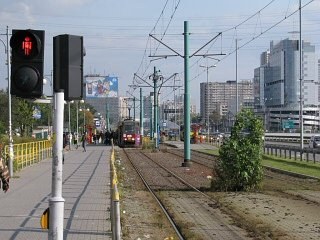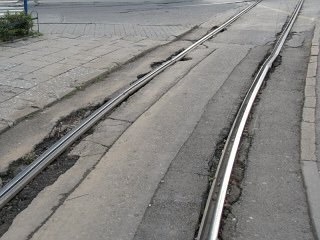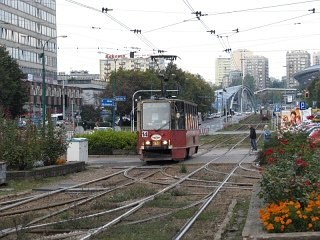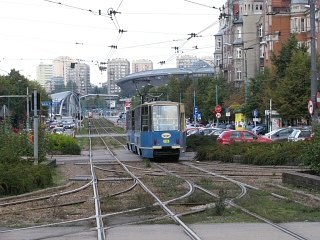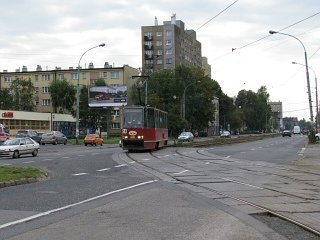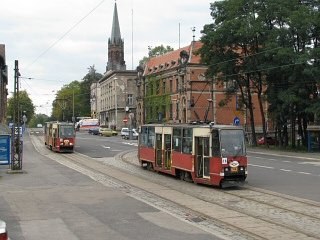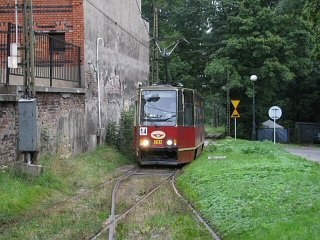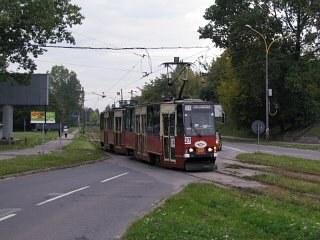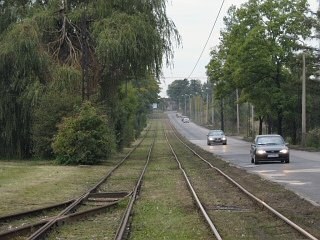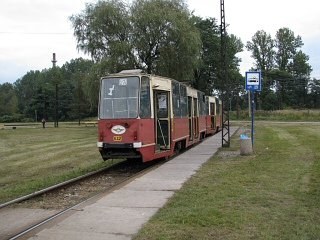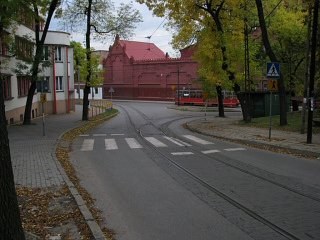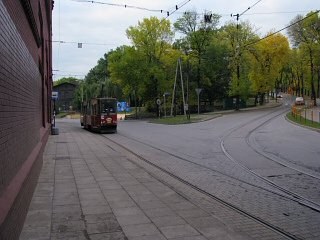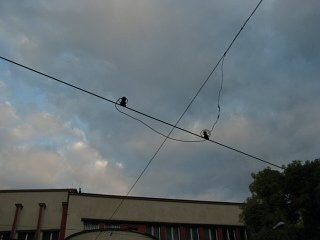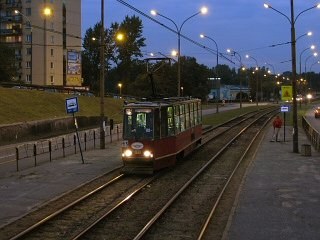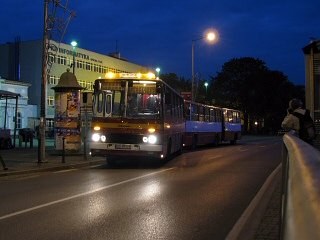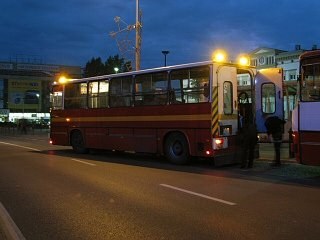budapest
other hungarian
close-up
lost rails
other countries
The interurban tramway network around Katowice in September 2008
I "discovered" the Upper-Silesian interurban tramways (Tramwaje ¦l±skie) in April 2008, when my fine friend NZA planned an extra stop into our trip back home from Warsaw. I kinda fell in love with this anachronistic, neglected, but incredibily interesting tram network right away, so it was no surprise I got back here in September.
First day: a bit of sunshine, then a long dusk
We came by car this time, and this gave us a chance to see a bit more in contrast to last time, when we were bound by the departure of our train.
We parked the car at "Silesia Center", a large mall built by hungarian enterpreneurs, which felt quite like (the malls) home. Apart from parking, it sports many restaurants, so it's a nice starting/ending point for trips with the tram. It's located next to the Katowice - Chorzów tram line, which was built out partially like a LRT corridor linking the towns of Katowice, Chorzów and Bytom. This is the backbone of the Upper-Silesian tram network, which is multi-centered formation, and not at all "the vicinal tramway of Katowice" as it's often called.
First we went back to the center of Katowice (Rynek), where the condition of the tracks is... well... not at all good.
Aleja Korfaniego was once built out as the communist-type main street of the city...at least on one side, as it can be seen on the left. The other side has remained, as visible to the right. The UFO-like object in the background is a sports event hall. The blue tram in its foreground is a driver training unit, and not a tram bought from Cracow (Kraków) as its color would suggest.
Making our way to east on a two-car unit. You can guess the quality of the tracks by looking at how the two cars move away from each other.
This section was possibly built as a kind of rapid tramway, but when we were there, it wasn't one.
One of my favorite places is this narrow "tunnel" underneath some railway lines.
Myslowice is where we arrive to after the underpass we just saw. The tram winds through small streets on its single-track alignment with passing loops. To the right we see the square in front of the train station. Here, route 14 coming from Katowice shares a reversing loop with route 26, which heads for Sosnowiec und Milowice from here.
We took a tram 26 to Dandówka, where we changed to a 27.
Latter line runs to Kazimierz through a territory once belonging to Russia, hence one can see lots of wooden houses along the way, which are in strong contrast to the "german-ish" look of the streets of Katowice.
On our way back we changed to a tram 24 in Sosnowiec, and boy, was it a good decision! The reversing triangle (wye) at the end of the line in Okrzei is located on a hillside, and is quite a place for tram fans!
The reversing process is "secured" by a road guard, and is accomplished surprisingly fast.
Colorful impressions on the way back to Sosnowiec (the stop to the right is called Sielec Przychodnia).
Okay, people from english-speaking countries might not feel the same way as those who had grown up with Ikarus buses built in Hungary, but for us it was great to see these old irons still going strong! They feature some characteristics of older Ikarus 200 production batches (like the old-style folding doors), but they still seemed to be in a better condition than most Ikarus 280 buses in Budapest.
Articulated (bendy) buses without the semitrailer (the part after the articulation) are often seen in Poland as works cars. Here we see one at the Sosnowiec train station, preparing...
... to tow away a broken-down Ikarus.
Next page - back to trams: the long way to Bytom Stroszek
Back to the top Back to the main page
